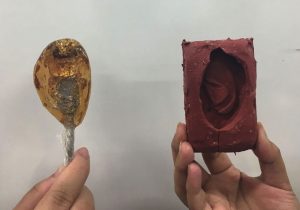
By Actualisé – December 22, 2016 – The Huffington Post.fr
http://www.huffingtonpost.fr/2016/12/22/le-sexe-avec-les-robots-ca-pourrait-commencer-des-2017/

TECHNO – Avoir des relations sexuelles avec des robots “c’est pour demain”, a prédit un chercheur en intelligence artificielle lors d’une conférence consacrée aux jouets sexuels interactifs et aux relations avec les humanoïdes, organisée à Londres les 19 et 20 décembre.
Si le cinéma et la télévision, avec récemment par exemple “Ex Machina” et “Westworld“, ont largement exploré l’idée des androïdes comme objets de séduction, les robots sexuels restent pour l’instant du domaine de la science fiction.
Cela devrait changer rapidement, prédit toutefois le spécialiste David Levy, “avec l’arrivée des premiers robots sexuels quelque part l’an prochain”.
L’entreprise californienne Abyss Creations a en effet annoncé vouloir mettre sur le marché dès 2017 des robots sexuels qui présentent toutes les apparences de l’humain. La société propose déjà des “poupées sexuelles” grandeur nature depuis des années, mais va maintenant leur donner la parole. Elles pourront discuter avec une personne, lui demander comment s’est passée sa journée, etc.
Le sexe à distance
En attendant, les dernières trouvailles en matière de jouets sexuels électroniques ont été présentées lors de la conférence organisée par l’université Goldsmiths de Londres, comme cette application mobile permettant aux couples d’échanger des baisers à distance et baptisée “Kissenger”.
Une autre application qui propose d’échanger des bruits et sensations de léchage, “Teletongue”, est en cours de développement à l’université Keio de Tokyo. Encore plus loin et plus bizarre, le site BlowCast propose des fellations via internet, en enregistrant d’un côté les sensations et en les retransmettant de l’autre, avec des sextoys connectés.
Lynne Hall, du département de sciences informatiques de l’université britannique de Sunderland, estime que les robots pourraient créer “une expérience sexuelle fantastique”. “Il y a plein d’avantages au sexe avec les robots… C’est sûr, vous n’attrapez pas de maladie, vous pouvez contrôler”, a-t-elle mis en avant. Et selon elle, il n’y aucun risque de le voir supplanter le sexe entre humains.
Les mariages avec des robots pour 2050?
“On nous inculque une sorte de panique morale… ‘c’est dégoûtant… personne ne fera plus l’amour avec un humain’”, dit-elle. “Mais les gens regardent régulièrement du porno et continuent pourtant de faire l’amour avec des êtres humains.”
David Levy, auteur en 2007 du livre “Love and Sex with robots”, qui a donné son nom au symposium londonien, va plus loin et estime que l’homme pourrait aussi envisager d’épouser des robots dès le milieu du siècle.
Les robots du futur seront “patients, gentils, protecteurs, aimants”, jamais “jaloux, vantards, arrogants, brutaux”, a affirmé David Levy, par ailleurs champion international d’échecs britannique. “A moins évidemment que vous ne le souhaitiez”.
Selon sa vision, des parents robots pourraient devenir une norme sociale, avec des lois promouvant “l’identité robot”. “Le temps viendra où le débat théorique devra évoluer en loi et les conséquences de ces lois seront stupéfiantes”, présage-t-il.
Pour le moment cependant, envisager des relations sexuelles avec un humanoïde va trop loin pour beaucoup de monde, souligne Emma Yann Zhang, une étudiante de City University de Londres qui a travaillé sur le prototype “Kissenger”.
Une étude menée par l’Institut d’imagerie de Malaisie, en collaboration avec la City University, montre en effet que si les gens sont ouverts à la possibilité que des humains puissent être attirés par des robots, la plupart n’envisagent aucunement de prendre un robot pour amant, a-t-elle souligné.




/cdn1.vox-cdn.com/uploads/chorus_image/image/52495985/Mjg0NjM0NQ.0.jpeg)








